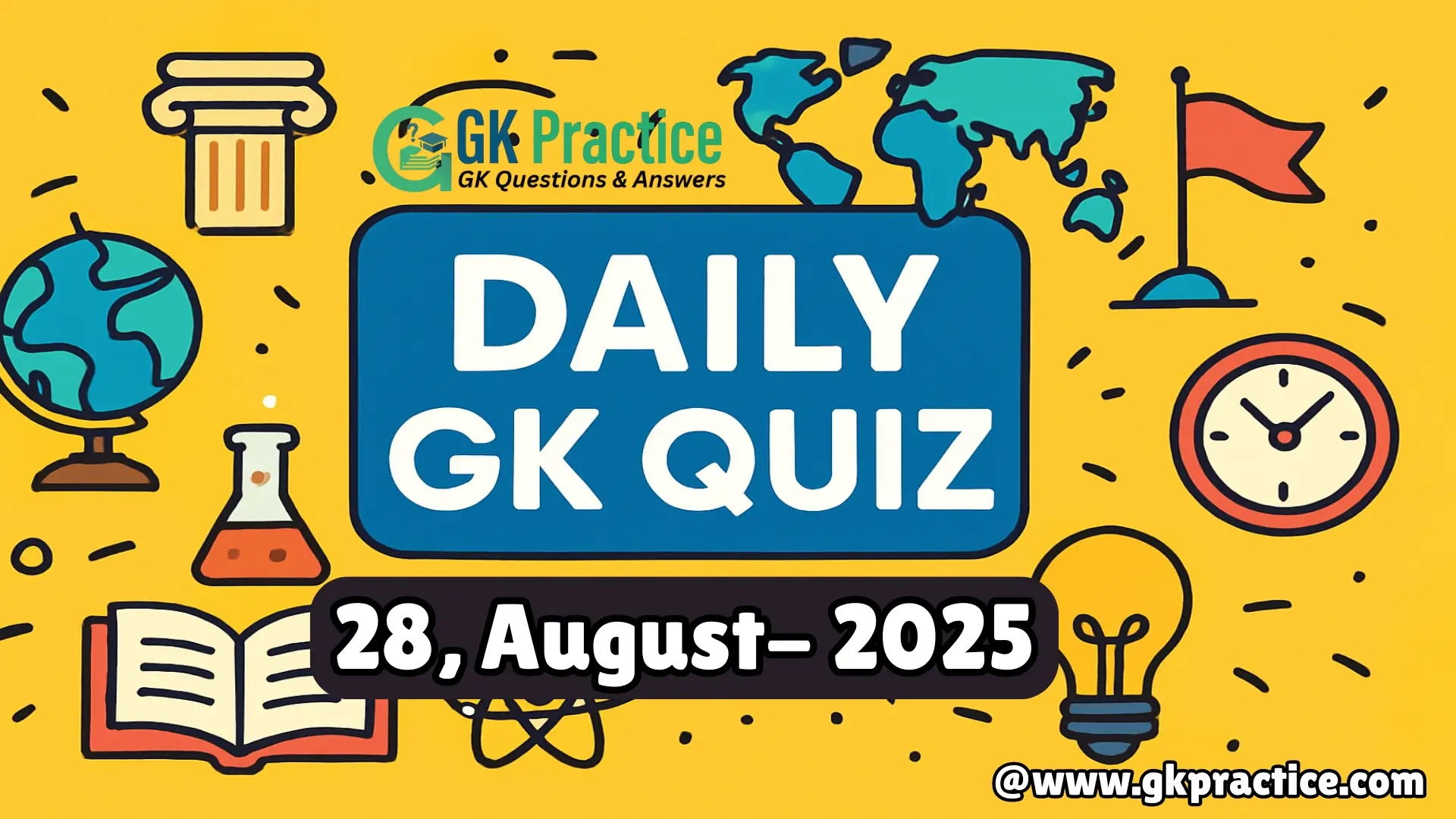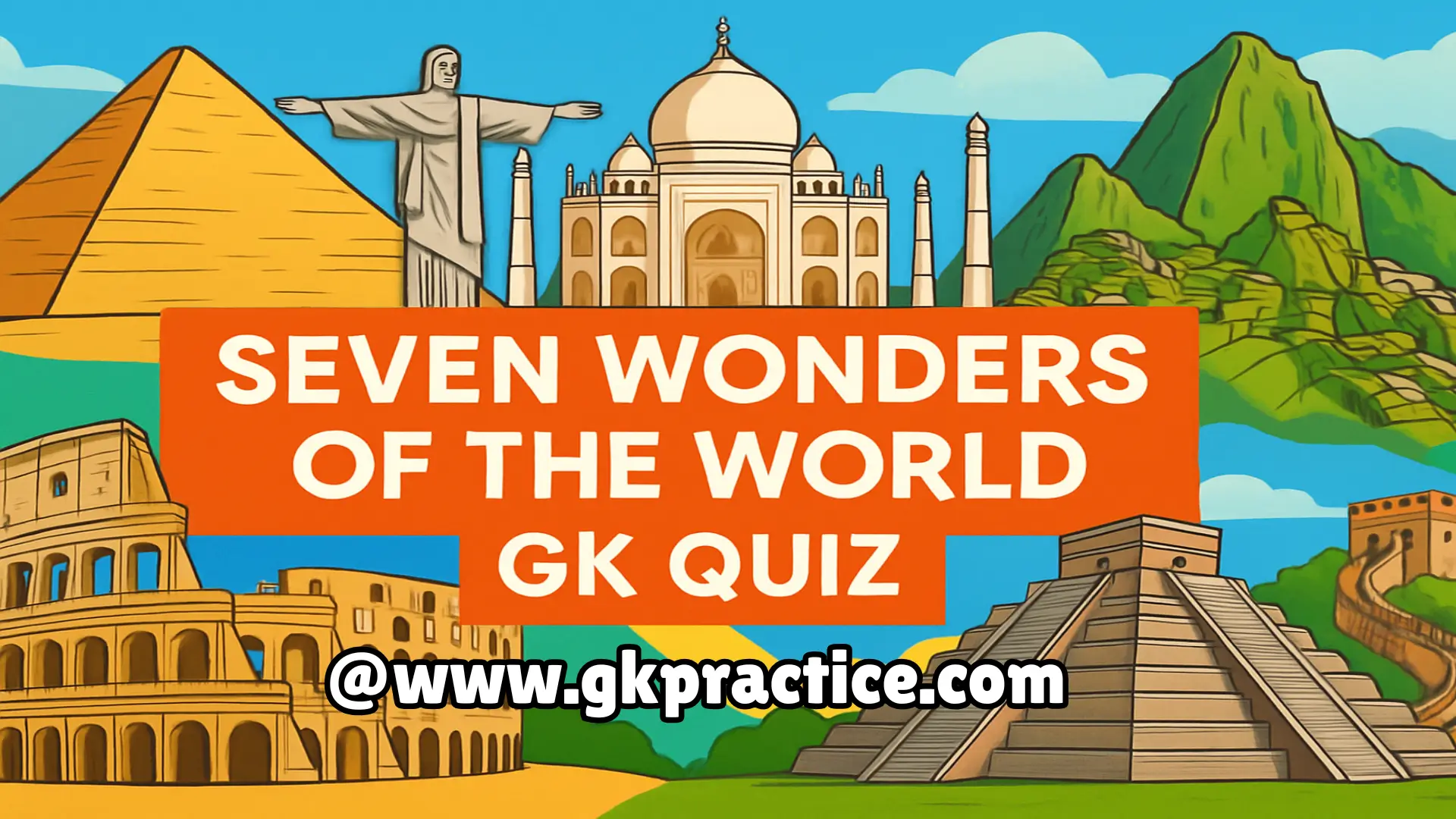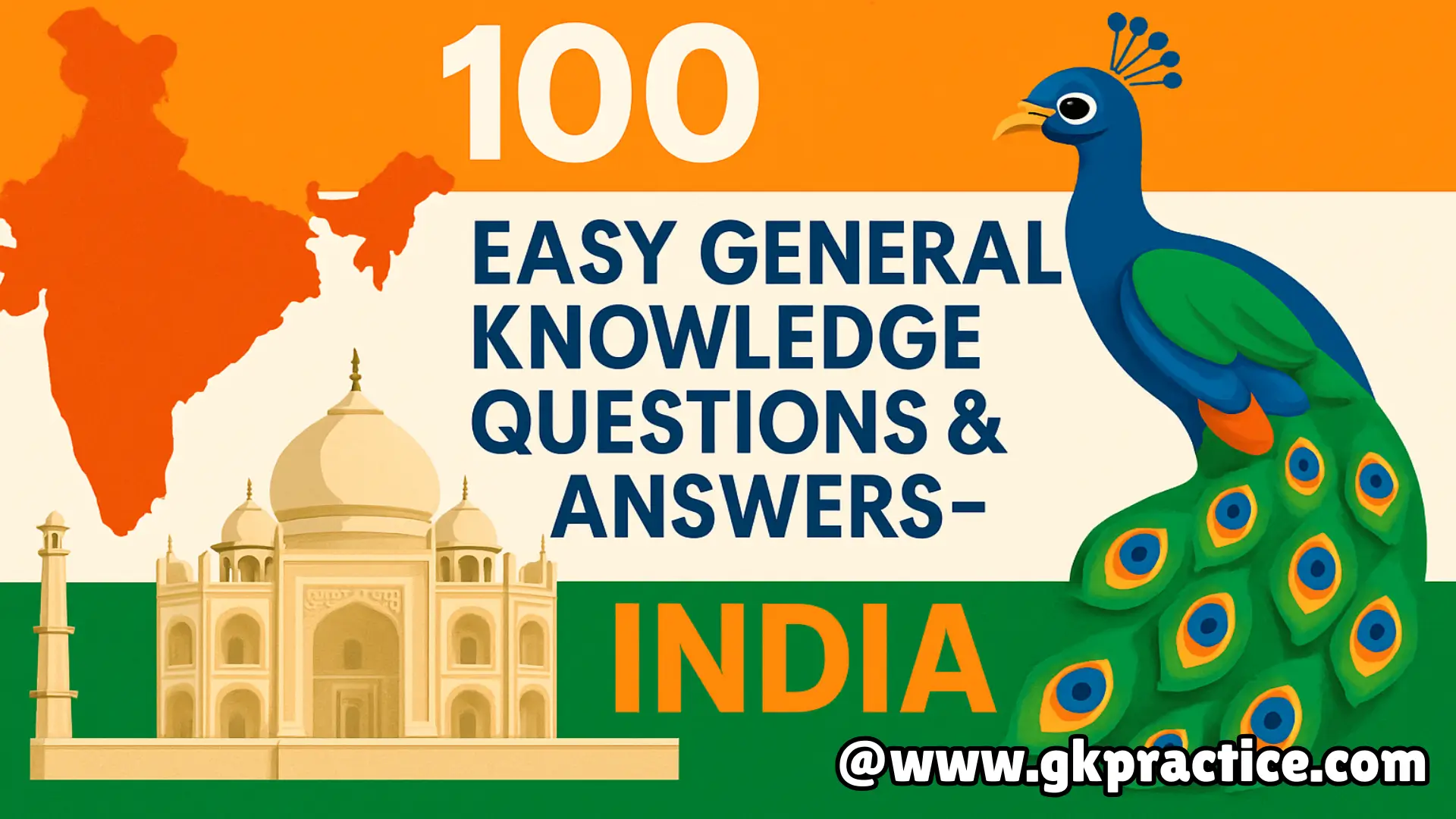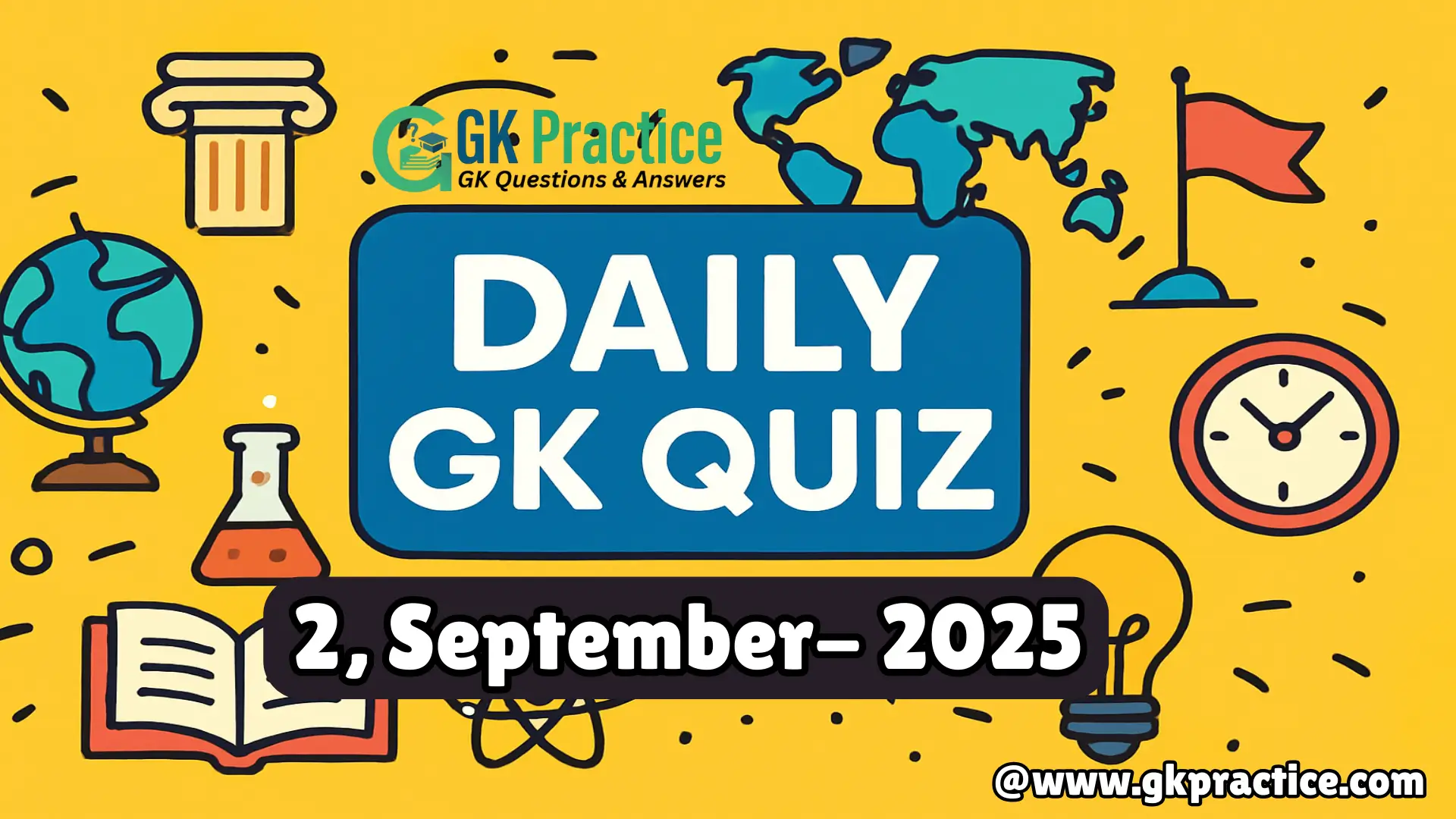Boost your exam preparation with our Daily GK Quiz. Solve fresh questions from history, geography, polity, science, current affairs, and static GK with detailed explanations. Perfect for SSC, Banking, UPSC, Railways, and other competitive exams.
Daily GK Quiz – Questions with Answers & Explanations:-
Explanation: Jupiter is the largest planet in the Solar System with a diameter of about 142,984 km. It is a gas giant composed mainly of hydrogen and helium. Known for its Great Red Spot storm, it has 95 confirmed moons including Ganymede, the largest.
Explanation: In 2015, the Planning Commission was replaced by the NITI Aayog (National Institution for Transforming India). It serves as a policy think-tank of the Government of India, focusing on cooperative federalism and fostering strategies for sustainable development across states.
Explanation: Lord Louis Mountbatten served as the last Viceroy of British India and the first Governor-General of independent India from 1947 to 1948. He was succeeded by C. Rajagopalachari, who became the only Indian to hold the Governor-General’s post.
Explanation: Gujarat has the longest coastline in India, stretching about 1,600 km. The state’s coast along the Arabian Sea is significant for trade, ports like Kandla and Mundra, and fishing industries. Its location has historically made it vital for maritime activities.
Explanation: India’s first satellite, Aryabhata, was launched on April 19, 1975, from the Soviet Union’s launch site. It was named after the ancient Indian mathematician-astronomer Aryabhata. The satellite marked India’s entry into space research and laid the foundation for ISRO’s future missions.
Explanation: The Indian Parliament is bicameral, comprising the Lok Sabha (House of the People) and the Rajya Sabha (Council of States). The President of India is also an integral part of the Parliament. This structure ensures representation of both citizens and states.
Explanation: The Jama Masjid in Delhi, one of the largest mosques in India, was commissioned by Mughal emperor Shah Jahan and completed in 1656. Built in red sandstone and marble, it reflects Mughal architectural grandeur, similar to the Taj Mahal and Red Fort.
Explanation: The United Nations Organization (UNO) was founded on October 24, 1945, after World War II to promote peace, security, and cooperation among nations. It replaced the League of Nations and has its headquarters in New York, with 193 member countries today.
Explanation: The Bharat Ratna was instituted in 1954, and its first recipients were C. Rajagopalachari, Dr. S. Radhakrishnan, and scientist C.V. Raman. Rajagopalachari was India’s last Governor-General, Radhakrishnan a philosopher-President, and Raman a Nobel laureate in Physics.
Explanation: Gir National Park, located in Gujarat, is the only natural habitat of Asiatic lions. Spread over 1,400 sq km, it was established in 1965 to protect the endangered species. Today, it is a major wildlife sanctuary and eco-tourism destination in India.
Consistent practice is the key to success in competitive exams. Our Daily GK Quiz helps you sharpen your knowledge and stay updated with important facts. Keep practicing every day, track your progress, and improve your accuracy. Stay tuned for tomorrow’s quiz and challenge yourself daily.
- Join Telegram Channel to Get Daily GK Questions & Answers for Competitive Exams







